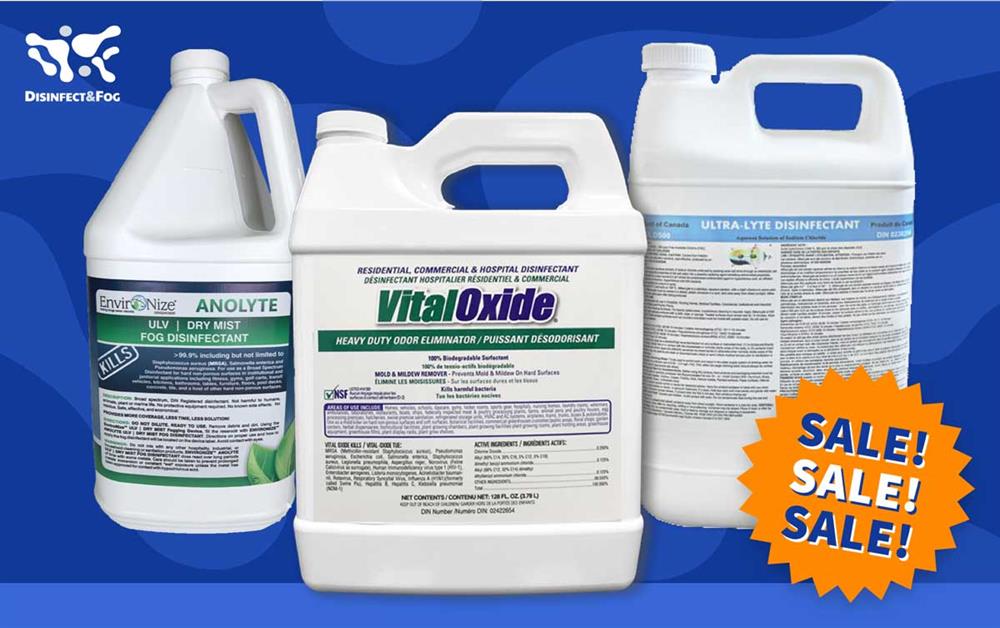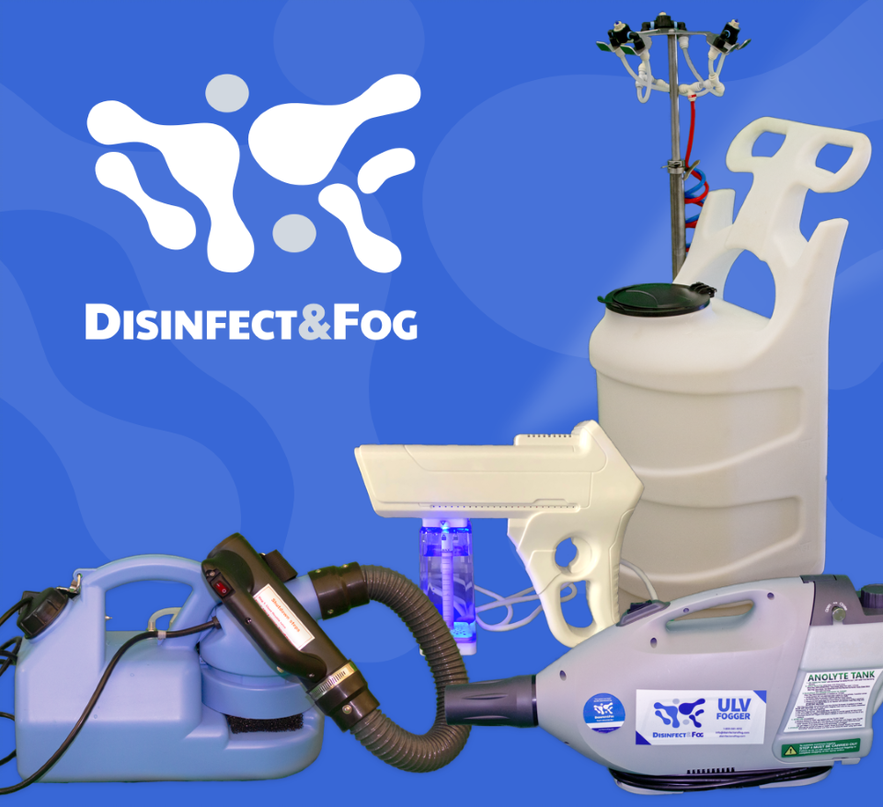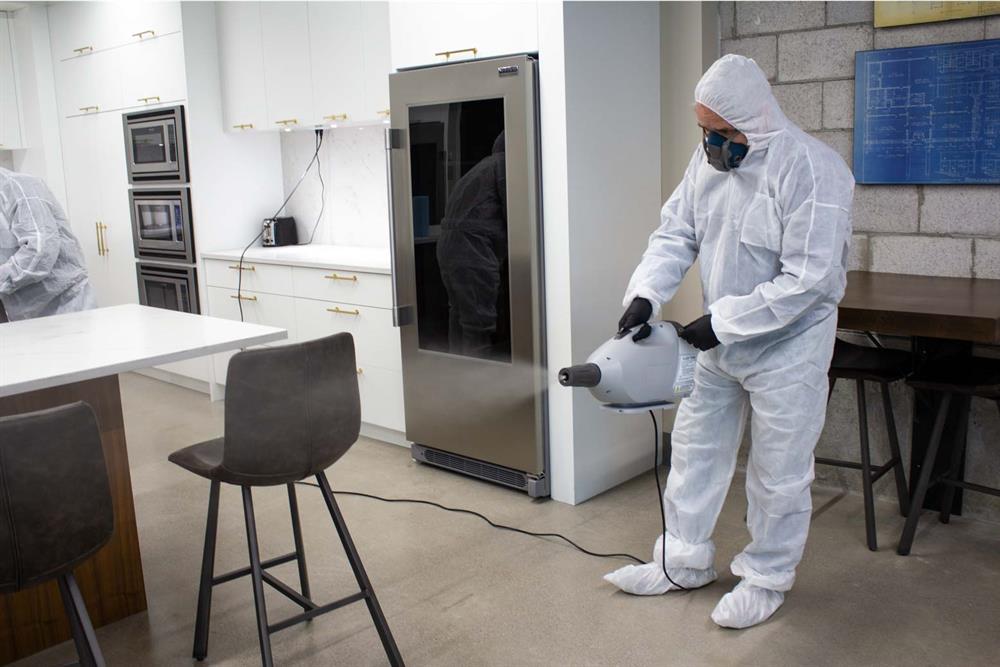If you look down at your hands right now, are they clean? To the naked eye they likely look clean, but in fact, there are more than 500,000 bacteria in a square inch of your skin. Don't worry; most of them are harmless to you, but occasionally microorganisms like viruses can easily transfer from your hands into your body through your eyes, nose and mouth. Additionally, the surfaces in your workplace or home are more possibly contaminated with pathogens and microorganisms. So, what's the solution? The answer is obvious, using disinfectants can reduce the risk.
As you know, due to the COVID-19 pandemic, the need for hand and surface disinfectants and sanitizers has increased. People use different types of disinfectants to clean their hands and environments regularly. Do you know how types of disinfectants differ? Do you know what kind of disinfection you should use? In this article, we will talk about the various types of disinfectants and how they work.
What are Fogger Disinfectants and How Do They Work?
Disinfectant foggers are potent germicides applied to non-living surfaces and can kill many or all pathogenic microorganisms. Disinfectant products can quickly destroy pathogens such as viruses and bacteria, but not all; bacterial spores and Mycobacteria, for example, are resistant to chemical disinfectants.
How do they work? To clarify, the disinfectant chemical formula often contains active ingredients that target the pathogens' cell walls and destroy them.
One thing that people often forget when disinfecting and cleaning is that in order for a disinfectant to work properly, it needs to have a sufficient dwell time. Just like when you wash your hands you need to allow for 20-30 seconds before washing off the soap, disinfectants need to dwell for a few minutes in order to ensure any harmful bacteria or viruses have been disinfected.
What are the Disinfectants Solutions?
Disinfectants are available in different forms to make people's lives easier. For instance, disinfectant wipes and disinfectant sprays are popular forms of disinfection methods.
One of the best types of chemical disinfectants are Environize Anolyte, VItal Oxide and Ultra lyte. you can replace the use of chemicals with a natural environmental alternative for fogging that is safe to any form of life whether it be human, plant, animal, or marine. This product is an all-natural antibacterial/antimicrobial solution that effectively controls a broad spectrum of harmful pathogens.

The Most Modern Disinfection Method
Thanks to advanced technology, the prevalence of modern electrical or rechargeable disinfectant fogger machines are increasing. This type of disinfection is practical and safe and can kill all types of pathogens. You may have heard of fogging machines, but do you know what they are? The fog machines contain a disinfectant that is recommended for use in foggers that is environmentally friendly, non-toxic, safe for humans and pets, yet still 99.9% effective.
The disinfectant is sprayed out of the fogger in micron-sized droplets at a powerful rate, killing pathogens on surfaces and in the air. Disinfectant products are approved by Health Canada and assigned a Drug Identification Number (DIN).
The important thing to note about all foggers is the distribution and dwell time of the disinfectant. Foggers are made to evenly distribute the microns across the environment, leaving the disinfectant to dwell on surfaces and in the air for a few minutes, allowing enough time to completely kill any pathogens. No rinsing or wiping is needed after fogging a space.
Disinfectant Fogging Types
There are two popular forms of disinfectant fogging: wet-type and dry-type. A wet-type fogger produces a fog similar to a mist that can disinfect surfaces and air effectively. A wet-type fogger is a reliable tool for sanitizing public areas, such as hospitals, churches, and schools. A dry-type fogger produces a dry fog, making it excellent for areas that are sensitive to moisture such as electronics, laptop, clothes, tableware, and cookware.
Under wet-type foggers, we have ULV foggers and electrostatic foggers.
Read More: The Pros and Cons of Different Types of Sprayers & Foggers
ULV (Ultra Low Volume) Foggers are very powerful foggers, with the ability to produce a large spray with a low volume of disinfectant for cost effect disinfecting. These foggers can spray up to 15 meters and are great for both indoor and outdoor fogging, especially large spaces like offices, schools, hospitals, and gyms. A few examples of ULV foggers are the Heavy Duty Fogger, the Hurricane Fogger, and the Big Blue Fogger. Since ULV foggers are wet-type, many feature the ability to dry surfaces by blowing out air without disinfectant if over-spraying occurs.

Electrostatic foggers are also a new and advanced disinfection tool that is changing the cleaning industry. Somewhat similar to the wet type, but charged electrically, electrostatic foggers can produce both negatively charged or positively charged particles to combat viruses more effectively. An example of an electrostatic fogger would be the Portable Fogger, which is as the name states, is a cordless fogger with a rechargeable battery, making it great for on-the-go fogging.
When it comes to dry-type foggers, most are thermal fogger. The disinfectant gets heated up before being emitted, producing the dry fog. As mentioned above, these foggers are great for almost any surface. An example of a dry thermal fogger is the Nano Atomizer. This fogger is especially helpful in the time of a pandemic when it is crucial to disinfect frequently used places and objects such as phones, ATMs, keyboards, and elevator buttons. All of these are sensitive to moisture, making disinfecting normally harder, but with the Nano Atomizer, disinfection is no worry.

One last fogger that is extremely useful for very large spaces such as gymnasiums, warehouses, factories, and large plant environments is the Industrial Fogger. This fogging machine features a barrel, to hold extremely large amounts of disinfectant, and a telescopic pole that can extend up to 9 feet tall. The top of the pole is where the disinfectant is emitted from, so anywhere with high ceilings is where this fogger shines. Since pathogens can hang in the air, it is so important to disinfect not only surfaces but the environment as a whole, which is exactly what the Industrial Fogger can do.
Now that you understand more about disinfecting, you can take a look at your current disinfecting routine and determine if there are ways that you could be saving time and money while disinfecting more effectively.
Source: https://www.disinfectandfog.com/blog/types-of-disinfectants